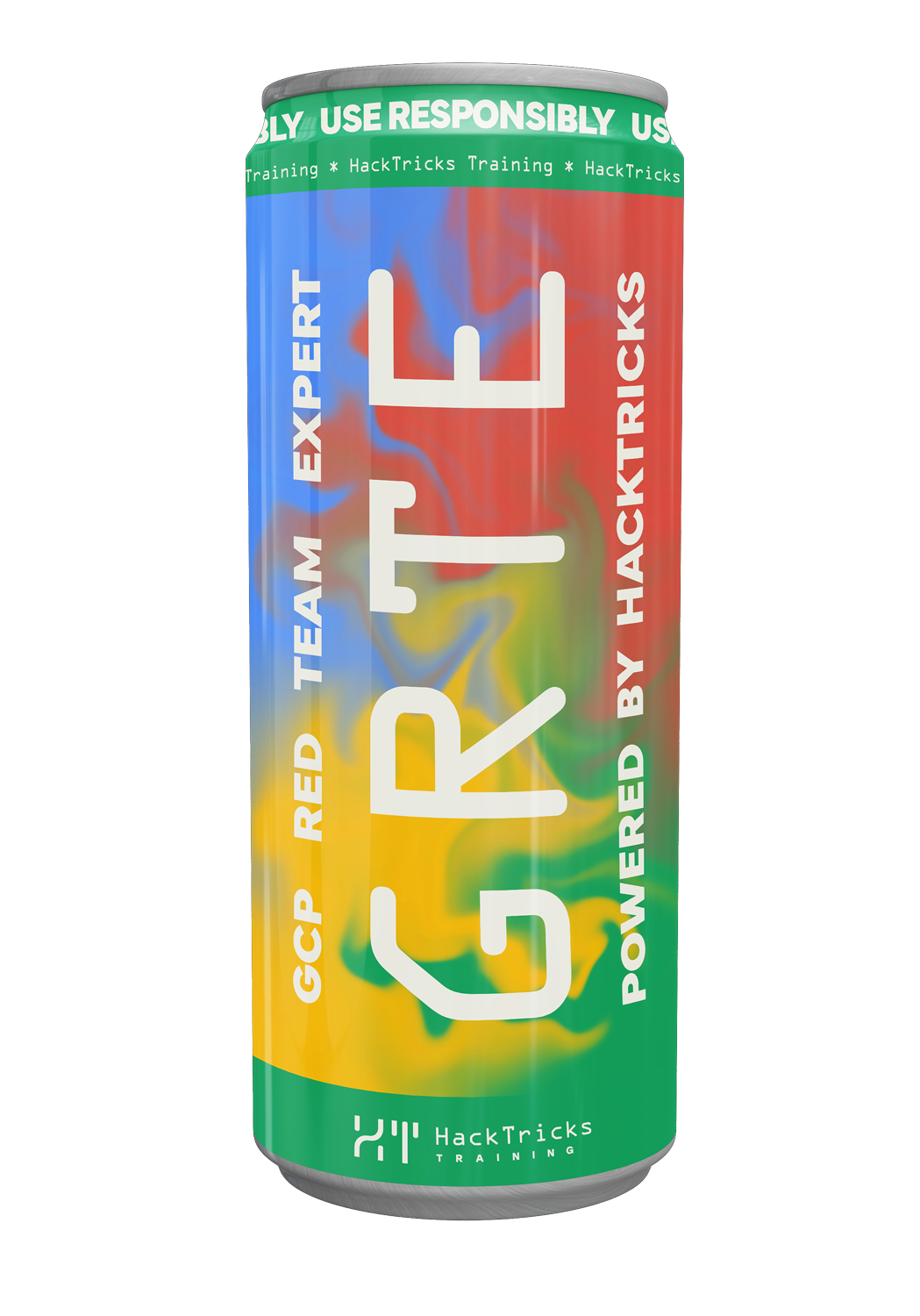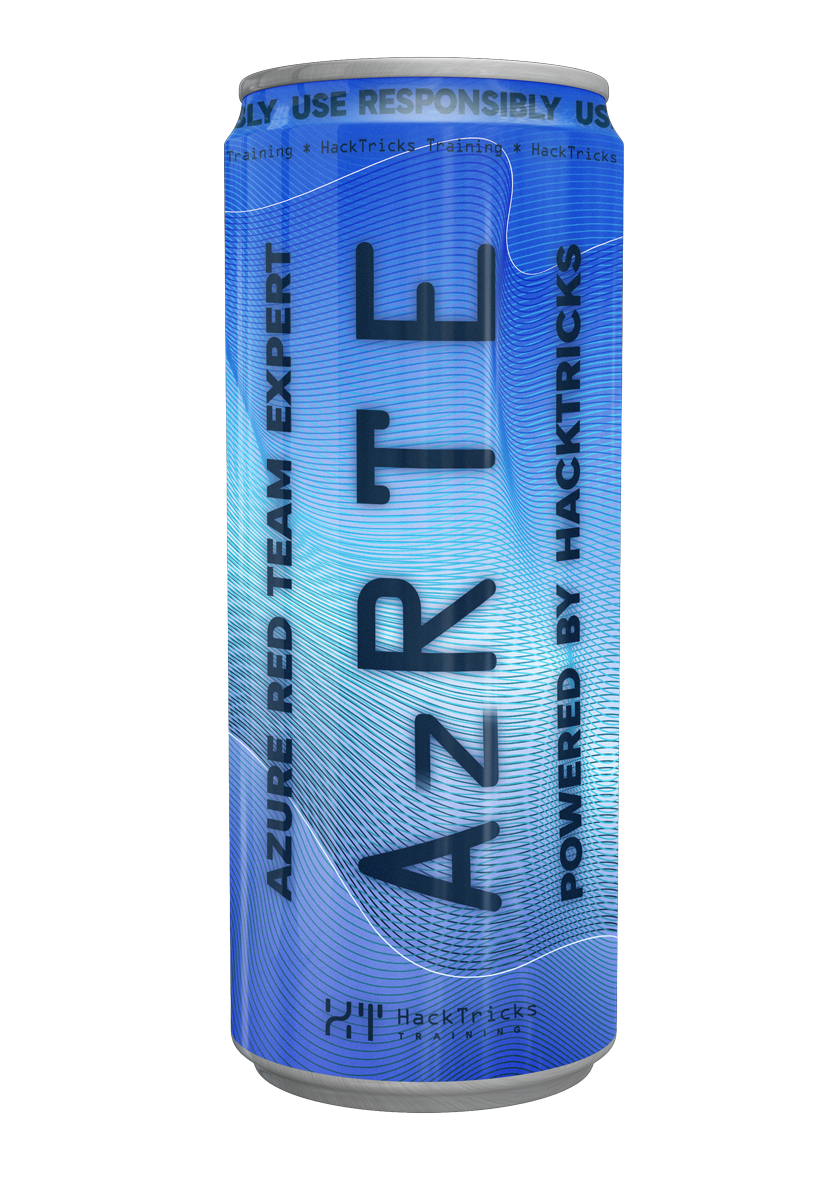Az - Outils d'énumération
Reading time: 18 minutes
tip
Apprenez et pratiquez le hacking AWS : HackTricks Training AWS Red Team Expert (ARTE)
HackTricks Training AWS Red Team Expert (ARTE)
Apprenez et pratiquez le hacking GCP :  HackTricks Training GCP Red Team Expert (GRTE)
HackTricks Training GCP Red Team Expert (GRTE) Apprenez et pratiquez le hacking Azure :
Apprenez et pratiquez le hacking Azure :  HackTricks Training Azure Red Team Expert (AzRTE)
HackTricks Training Azure Red Team Expert (AzRTE)
Soutenir HackTricks
- Vérifiez les plans d'abonnement !
- Rejoignez le 💬 groupe Discord ou le groupe telegram ou suivez-nous sur Twitter 🐦 @hacktricks_live.
- Partagez des astuces de hacking en soumettant des PR au HackTricks et HackTricks Cloud dépôts github.
Installer PowerShell sous Linux
tip
Sous Linux, vous devrez installer PowerShell Core:
sudo apt-get update
sudo apt-get install -y wget apt-transport-https software-properties-common
# Ubuntu 20.04
wget -q https://packages.microsoft.com/config/ubuntu/20.04/packages-microsoft-prod.deb
# Update repos
sudo apt-get update
sudo add-apt-repository universe
# Install & start powershell
sudo apt-get install -y powershell
pwsh
# Az cli
curl -sL https://aka.ms/InstallAzureCLIDeb | sudo bash
Installer PowerShell sur MacOS
Instructions provenant de la documentation:
- Installez
brewsi ce n'est pas déjà fait :
/bin/bash -c "$(curl -fsSL https://raw.githubusercontent.com/Homebrew/install/HEAD/install.sh)"
- Installez la dernière version stable de PowerShell :
brew install powershell/tap/powershell
- Exécuter PowerShell:
pwsh
- Mise à jour :
brew update
brew upgrade powershell
Principaux outils d'énumération
az cli
Azure Command-Line Interface (CLI) est un outil multiplateforme écrit en Python pour la gestion et l'administration (de la plupart) des ressources Azure et Entra ID. Il se connecte à Azure et exécute des commandes d'administration via la ligne de commande ou des scripts.
Suivez ce lien pour les installation instructions¡.
Les commandes dans Azure CLI sont structurées selon le schéma : az <service> <action> <parameters>
Debug | MitM az cli
En utilisant le paramètre --debug, il est possible de voir toutes les requêtes que l'outil az envoie:
az account management-group list --output table --debug
Pour effectuer un MitM sur l'outil et check all the requests qu'il envoie manuellement, vous pouvez faire :
export ADAL_PYTHON_SSL_NO_VERIFY=1
export AZURE_CLI_DISABLE_CONNECTION_VERIFICATION=1
export HTTPS_PROXY="http://127.0.0.1:8080"
export HTTP_PROXY="http://127.0.0.1:8080"
# If this is not enough
# Download the certificate from Burp and convert it into .pem format
# And export the following env variable
openssl x509 -in ~/Downloads/cacert.der -inform DER -out ~/Downloads/cacert.pem -outform PEM
export REQUESTS_CA_BUNDLE=/Users/user/Downloads/cacert.pem
Az PowerShell
Azure PowerShell est un module contenant des cmdlets pour gérer des ressources Azure directement depuis la ligne de commande PowerShell.
Follow this link for the instructions d'installation.
Commands in Azure PowerShell AZ Module are structured like: <Action>-Az<Service> <parameters>
Debug | MitM Az PowerShell
En utilisant le paramètre -Debug, il est possible de voir toutes les requêtes envoyées par l'outil :
Get-AzResourceGroup -Debug
In order to do a MitM to the tool and check all the requests it's sending manually you can set the env variables HTTPS_PROXY and HTTP_PROXY according to the docs.
Microsoft Graph PowerShell
Microsoft Graph PowerShell est un SDK multiplateforme qui permet d'accéder à toutes les Microsoft Graph APIs, y compris des services comme SharePoint, Exchange et Outlook, via un seul endpoint. Il prend en charge PowerShell 7+, l'authentification moderne via MSAL, les identités externes et les requêtes avancées. En mettant l'accent sur le principe du moindre privilège, il garantit des opérations sécurisées et reçoit des mises à jour régulières pour rester aligné avec les dernières fonctionnalités de l'API Microsoft Graph.
Follow this link for the installation instructions.
Commands in Microsoft Graph PowerShell are structured like: <Action>-Mg<Service> <parameters>
Débogage de Microsoft Graph PowerShell
En utilisant le paramètre -Debug, il est possible de voir toutes les requêtes que l'outil envoie:
Get-MgUser -Debug
AzureAD Powershell
Le module Azure Active Directory (AD), désormais deprecated, fait partie d'Azure PowerShell pour la gestion des ressources Azure AD. Il fournit des cmdlets pour des tâches telles que la gestion des utilisateurs, des groupes et des enregistrements d'applications dans Entra ID.
tip
Il est remplacé par Microsoft Graph PowerShell
Suivez ce lien pour les instructions d'installation.
Automated Recon & Compliance Tools
turbot azure plugins
Turbot avec steampipe et powerpipe permet de collecter des informations depuis Azure et Entra ID, d'effectuer des contrôles de conformité et de détecter des mauvaises configurations. Les modules Azure actuellement les plus recommandés à exécuter sont :
- https://github.com/turbot/steampipe-mod-azure-compliance
- https://github.com/turbot/steampipe-mod-azure-insights
- https://github.com/turbot/steampipe-mod-azuread-insights
# Install
brew install turbot/tap/powerpipe
brew install turbot/tap/steampipe
steampipe plugin install azure
steampipe plugin install azuread
# Config creds via env vars or az cli default creds will be used
export AZURE_ENVIRONMENT="AZUREPUBLICCLOUD"
export AZURE_TENANT_ID="<tenant-id>"
export AZURE_SUBSCRIPTION_ID="<subscription-id>"
export AZURE_CLIENT_ID="<client-id>"
export AZURE_CLIENT_SECRET="<secret>"
# Run steampipe-mod-azure-insights
cd /tmp
mkdir dashboards
cd dashboards
powerpipe mod init
powerpipe mod install github.com/turbot/steampipe-mod-azure-insights
steampipe service start
powerpipe server
# Go to http://localhost:9033 in a browser
Prowler
Prowler est un outil de sécurité open source permettant d'effectuer des évaluations des meilleures pratiques de sécurité pour AWS, Azure, Google Cloud et Kubernetes, des audits, la réponse aux incidents, la surveillance continue, le renforcement et la préparation à la forensique.
Il permet essentiellement d'exécuter des centaines de vérifications sur un environnement Azure pour détecter des mauvaises configurations de sécurité et rassembler les résultats en json (et d'autres formats texte) ou les consulter sur le web.
# Create a application with Reader role and set the tenant ID, client ID and secret in prowler so it access the app
# Launch web with docker-compose
export DOCKER_DEFAULT_PLATFORM=linux/amd64
curl -LO https://raw.githubusercontent.com/prowler-cloud/prowler/refs/heads/master/docker-compose.yml
curl -LO https://raw.githubusercontent.com/prowler-cloud/prowler/refs/heads/master/.env
## If using an old docker-compose version, change the "env_file" params to: env_file: ".env"
docker compose up -d
# Access the web and configure the access to run a scan from it
# Prowler cli
python3 -m pip install prowler --break-system-packages
docker run --rm toniblyx/prowler:v4-latest azure --list-checks
docker run --rm toniblyx/prowler:v4-latest azure --list-services
docker run --rm toniblyx/prowler:v4-latest azure --list-compliance
docker run --rm -e "AZURE_CLIENT_ID=<client-id>" -e "AZURE_TENANT_ID=<tenant-id>" -e "AZURE_CLIENT_SECRET=<secret>" toniblyx/prowler:v4-latest azure --sp-env-auth
## It also support other authentication types, check: prowler azure --help
Monkey365
Il permet d'effectuer automatiquement des vérifications de la configuration de sécurité des abonnements Azure et de Microsoft Entra ID.
Les rapports HTML sont stockés dans le répertoire ./monkey-reports du dossier du dépôt GitHub.
git clone https://github.com/silverhack/monkey365
Get-ChildItem -Recurse monkey365 | Unblock-File
cd monkey365
Import-Module ./monkey365
mkdir /tmp/monkey365-scan
cd /tmp/monkey365-scan
Get-Help Invoke-Monkey365
Get-Help Invoke-Monkey365 -Detailed
# Scan with user creds (browser will be run)
Invoke-Monkey365 -TenantId <tenant-id> -Instance Azure -Collect All -ExportTo HTML
# Scan with App creds
$SecureClientSecret = ConvertTo-SecureString "<secret>" -AsPlainText -Force
Invoke-Monkey365 -TenantId <tenant-id> -ClientId <client-id> -ClientSecret $SecureClientSecret -Instance Azure -Collect All -ExportTo HTML
ScoutSuite
Scout Suite rassemble des données de configuration pour une inspection manuelle et met en évidence les zones à risque. C'est un outil d'audit de sécurité multi-cloud, qui permet d'évaluer la posture de sécurité des environnements cloud.
virtualenv -p python3 venv
source venv/bin/activate
pip install scoutsuite
scout --help
# Use --cli flag to use az cli credentials
# Use --user-account to have scout prompt for user credentials
# Use --user-account-browser to launch a browser to login
# Use --service-principal to have scout prompt for app credentials
python scout.py azure --cli
Azure-MG-Sub-Governance-Reporting
C'est un script PowerShell qui vous aide à visualiser toutes les ressources et autorisations à l'intérieur d'un Management Group et du tenant Entra ID et à détecter des erreurs de configuration de sécurité.
Il fonctionne en utilisant le module Az PowerShell, donc toute méthode d'authentification prise en charge par celui-ci est également prise en charge par l'outil.
import-module Az
.\AzGovVizParallel.ps1 -ManagementGroupId <management-group-id> [-SubscriptionIdWhitelist <subscription-id>]
Outils automatisés de post-exploitation
ROADRecon
L'énumération de ROADRecon fournit des informations sur la configuration d'Entra ID, comme les utilisateurs, les groupes, les rôles, les politiques d'accès conditionnel...
cd ROADTools
pipenv shell
# Login with user creds
roadrecon auth -u test@corp.onmicrosoft.com -p "Welcome2022!"
# Login with app creds
roadrecon auth --as-app --client "<client-id>" --password "<secret>" --tenant "<tenant-id>"
roadrecon gather
roadrecon gui
AzureHound
AzureHound est le collector BloodHound pour Microsoft Entra ID et Azure. C'est un binaire Go statique unique pour Windows/Linux/macOS qui communique directement avec :
- Microsoft Graph (Entra ID directory, M365) et
- Azure Resource Manager (ARM) control plane (subscriptions, resource groups, compute, storage, key vault, app services, AKS, etc.)
Caractéristiques principales
- S'exécute depuis n'importe où sur l'internet public contre les API du tenant (aucun accès au réseau interne requis)
- Génère du JSON pour ingestion par BloodHound CE afin de visualiser les chemins d'attaque entre identités et ressources cloud
- User-Agent par défaut observé : azurehound/v2.x.x
Options d'authentification
- Nom d'utilisateur + mot de passe : -u
-p - Refresh token : --refresh-token
- JSON Web Token (access token) : --jwt
- Service principal secret : -a
-s - Service principal certificate : -a
--cert <cert.pem> --key <key.pem> [--keypass ]
Exemples
# Full tenant collection to file using different auth flows
## User creds
azurehound list -u "<user>@<tenant>" -p "<pass>" -t "<tenant-id|domain>" -o ./output.json
## Use an access token (JWT) from az cli for Graph
JWT=$(az account get-access-token --resource https://graph.microsoft.com -o tsv --query accessToken)
azurehound list --jwt "$JWT" -t "<tenant-id>" -o ./output.json
## Use a refresh token (e.g., from device code flow)
azurehound list --refresh-token "<refresh_token>" -t "<tenant-id>" -o ./output.json
## Service principal secret
azurehound list -a "<client-id>" -s "<secret>" -t "<tenant-id>" -o ./output.json
## Service principal certificate
azurehound list -a "<client-id>" --cert "/path/cert.pem" --key "/path/key.pem" -t "<tenant-id>" -o ./output.json
# Targeted discovery
azurehound list users -t "<tenant-id>" -o users.json
azurehound list groups -t "<tenant-id>" -o groups.json
azurehound list roles -t "<tenant-id>" -o roles.json
azurehound list role-assignments -t "<tenant-id>" -o role-assignments.json
# Azure resources via ARM
azurehound list subscriptions -t "<tenant-id>" -o subs.json
azurehound list resource-groups -t "<tenant-id>" -o rgs.json
azurehound list virtual-machines -t "<tenant-id>" -o vms.json
azurehound list key-vaults -t "<tenant-id>" -o kv.json
azurehound list storage-accounts -t "<tenant-id>" -o sa.json
azurehound list storage-containers -t "<tenant-id>" -o containers.json
azurehound list web-apps -t "<tenant-id>" -o webapps.json
azurehound list function-apps -t "<tenant-id>" -o funcapps.json
What gets queried
- Graph endpoints (exemples):
- /v1.0/organization, /v1.0/users, /v1.0/groups, /v1.0/roleManagement/directory/roleDefinitions, directoryRoles, owners/members
- ARM endpoints (exemples):
- management.azure.com/subscriptions/.../providers/Microsoft.Storage/storageAccounts
- .../Microsoft.KeyVault/vaults, .../Microsoft.Compute/virtualMachines, .../Microsoft.Web/sites, .../Microsoft.ContainerService/managedClusters
Preflight behavior and endpoints
- Each azurehound list
- Identity platform: login.microsoftonline.com
- Graph: GET https://graph.microsoft.com/v1.0/organization
- ARM: GET https://management.azure.com/subscriptions?api-version=...
- Cloud environment base URLs differ for Government/China/Germany. See constants/environments.go in the repo.
ARM-heavy objects (less visible in Activity/Resource logs)
- The following list targets predominantly use ARM control plane reads: automation-accounts, container-registries, function-apps, key-vaults, logic-apps, managed-clusters, management-groups, resource-groups, storage-accounts, storage-containers, virtual-machines, vm-scale-sets, web-apps.
- These GET/list operations are typically not written to Activity Logs; data-plane reads (e.g., *.blob.core.windows.net, *.vault.azure.net) are covered by Diagnostic Settings at the resource level.
OPSEC and logging notes
- Microsoft Graph Activity Logs are not enabled by default; enable and export to SIEM to gain visibility of Graph calls. Expect the Graph preflight GET /v1.0/organization with UA azurehound/v2.x.x.
- Entra ID non-interactive sign-in logs record the identity platform auth (login.microsoftonline.com) used by AzureHound.
- ARM control-plane read/list operations are not recorded in Activity Logs; many azurehound list operations against resources won’t appear there. Only data-plane logging (via Diagnostic Settings) will capture reads to service endpoints.
- Defender XDR GraphApiAuditEvents (preview) can expose Graph calls and token identifiers but may lack UserAgent and have limited retention.
Tip: When enumerating for privilege paths, dump users, groups, roles, and role assignments, then ingest in BloodHound and use prebuilt cypher queries to surface Global Administrator/Privileged Role Administrator and transitive escalation via nested groups and RBAC assignments.
Launch the BloodHound web with curl -L https://ghst.ly/getbhce | docker compose -f - up and import the output.json file. Then, in the EXPLORE tab, in the CYPHER section you can see a folder icon that contains pre-built queries.
MicroBurst
MicroBurst inclut des fonctions et scripts qui prennent en charge Azure Services discovery, l'audit de configurations faibles, et des actions de post exploitation telles que credential dumping. Il est destiné à être utilisé lors de penetration tests où Azure est utilisé.
Import-Module .\MicroBurst.psm1
Import-Module .\Get-AzureDomainInfo.ps1
Get-AzureDomainInfo -folder MicroBurst -Verbose
PowerZure
PowerZure a été créé pour répondre au besoin d'un framework capable d'effectuer à la fois reconnaissance et exploitation d'Azure, d'EntraID et des ressources associées.
Il utilise le module Az PowerShell, donc toute méthode d'authentification prise en charge par ce module est prise en charge par l'outil.
# Login
Import-Module Az
Connect-AzAccount
# Clone and import PowerZure
git clone https://github.com/hausec/PowerZure
cd PowerZure
ipmo ./Powerzure.psd1
Invoke-Powerzure -h # Check all the options
# Info Gathering (read)
Get-AzureCurrentUser # Get current user
Get-AzureTarget # What can you access to
Get-AzureUser -All # Get all users
Get-AzureSQLDB -All # Get all SQL DBs
Get-AzureAppOwner # Owners of apps in Entra
Show-AzureStorageContent -All # List containers, shared and tables
Show-AzureKeyVaultContent -All # List all contents in key vaults
# Operational (write)
Set-AzureUserPassword -Password <password> -Username <username> # Change password
Set-AzureElevatedPrivileges # Get permissions from Global Administrator in EntraID to User Access Administrator in Azure RBAC.
New-AzureBackdoor -Username <username> -Password <password>
Invoke-AzureRunCommand -Command <command> -VMName <vmname>
[...]
GraphRunner
GraphRunner est un ensemble d'outils de post-exploitation pour interagir avec le Microsoft Graph API. Il fournit divers outils permettant d'effectuer de la reconnaissance, de la persistence et du pillaging de données à partir d'un compte Microsoft Entra ID (Azure AD).
#A good place to start is to authenticate with the Get-GraphTokens module. This module will launch a device-code login, allowing you to authenticate the session from a browser session. Access and refresh tokens will be written to the global $tokens variable. To use them with other GraphRunner modules use the Tokens flag (Example. Invoke-DumpApps -Tokens $tokens)
Import-Module .\GraphRunner.ps1
Get-GraphTokens
#This module gathers information about the tenant including the primary contact info, directory sync settings, and user settings such as if users have the ability to create apps, create groups, or consent to apps.
Invoke-GraphRecon -Tokens $tokens -PermissionEnum
#A module to dump conditional access policies from a tenant.
Invoke-GraphRecon -Tokens $tokens -PermissionEnum
#A module to dump conditional access policies from a tenant.
Invoke-DumpCAPS -Tokens $tokens -ResolveGuids
#This module helps identify malicious app registrations. It will dump a list of Azure app registrations from the tenant including permission scopes and users that have consented to the apps. Additionally, it will list external apps that are not owned by the current tenant or by Microsoft's main app tenant. This is a good way to find third-party external apps that users may have consented to.
Invoke-DumpApps -Tokens $tokens
#Gather the full list of users from the directory.
Get-AzureADUsers -Tokens $tokens -OutFile users.txt
#Create a list of security groups along with their members.
Get-SecurityGroups -AccessToken $tokens.access_token
#Gets groups that may be able to be modified by the current user
Get-UpdatableGroups -Tokens $tokens
#Finds dynamic groups and displays membership rules
Get-DynamicGroups -Tokens $tokens
#Gets a list of SharePoint site URLs visible to the current user
Get-SharePointSiteURLs -Tokens $tokens
#This module attempts to locate mailboxes in a tenant that have allowed other users to read them. By providing a userlist the module will attempt to access the inbox of each user and display if it was successful. The access token needs to be scoped to Mail.Read.Shared or Mail.ReadWrite.Shared for this to work.
Invoke-GraphOpenInboxFinder -Tokens $tokens -Userlist users.txt
#This module attempts to gather a tenant ID associated with a domain.
Get-TenantID -Domain
#Runs Invoke-GraphRecon, Get-AzureADUsers, Get-SecurityGroups, Invoke-DumpCAPS, Invoke-DumpApps, and then uses the default_detectors.json file to search with Invoke-SearchMailbox, Invoke-SearchSharePointAndOneDrive, and Invoke-SearchTeams.
Invoke-GraphRunner -Tokens $tokens
Stormspotter
Stormspotter crée un “attack graph” des ressources dans une Azure subscription. Il permet aux red teams et pentesters de visualiser l'attack surface et les opportunités de pivot au sein d'un tenant, et aide grandement vos defenders à s'orienter et à prioriser rapidement le travail d'incident response.
Malheureusement, il semble ne plus être maintenu.
# Start Backend
cd stormspotter\backend\
pipenv shell
python ssbackend.pyz
# Start Front-end
cd stormspotter\frontend\dist\spa\
quasar.cmd serve -p 9091 --history
# Run Stormcollector
cd stormspotter\stormcollector\
pipenv shell
az login -u test@corp.onmicrosoft.com -p Welcome2022!
python stormspotter\stormcollector\sscollector.pyz cli
# This will generate a .zip file to upload in the frontend (127.0.0.1:9091)
Références
- Cloud Discovery With AzureHound (Unit 42)
- AzureHound repository
- BloodHound repository
- AzureHound Community Edition Flags
- AzureHound constants/environments.go
- AzureHound client/storage_accounts.go
- AzureHound client/roles.go
tip
Apprenez et pratiquez le hacking AWS : HackTricks Training AWS Red Team Expert (ARTE)
HackTricks Training AWS Red Team Expert (ARTE)
Apprenez et pratiquez le hacking GCP :  HackTricks Training GCP Red Team Expert (GRTE)
HackTricks Training GCP Red Team Expert (GRTE) Apprenez et pratiquez le hacking Azure :
Apprenez et pratiquez le hacking Azure :  HackTricks Training Azure Red Team Expert (AzRTE)
HackTricks Training Azure Red Team Expert (AzRTE)
Soutenir HackTricks
- Vérifiez les plans d'abonnement !
- Rejoignez le 💬 groupe Discord ou le groupe telegram ou suivez-nous sur Twitter 🐦 @hacktricks_live.
- Partagez des astuces de hacking en soumettant des PR au HackTricks et HackTricks Cloud dépôts github.
 HackTricks Cloud
HackTricks Cloud